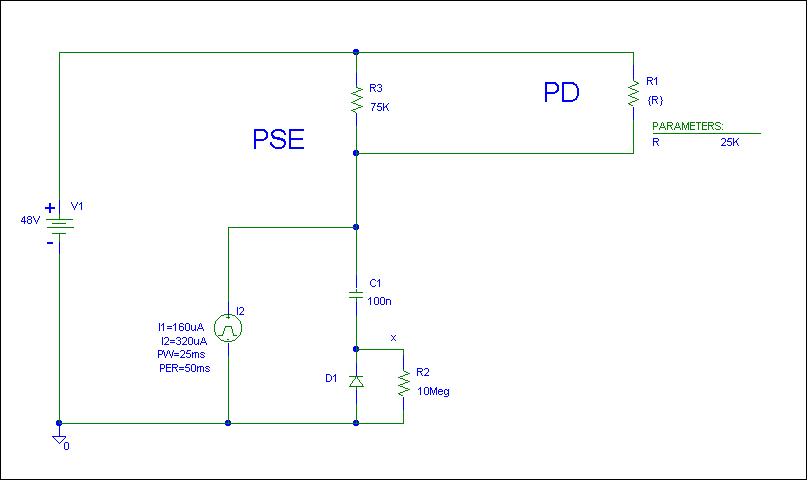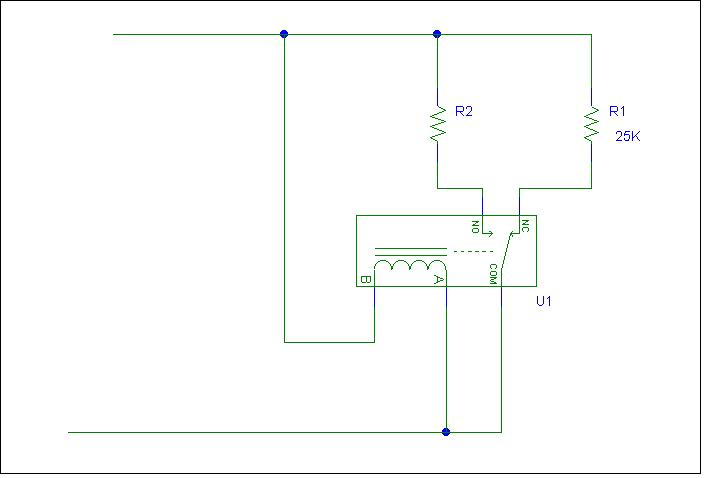
| Thread Links | Date Links | ||||
|---|---|---|---|---|---|
| Thread Prev | Thread Next | Thread Index | Date Prev | Date Next | Date Index |
I'm moving on to other assignments. One is within Avaya.
Here's a couple of ideas that I would like to share.
Roger always wanted a simple analog solution. To show that I am actually an analog designer here's a simple analog circuit for performing slope detection.

The detection circuit needs just one 60 volt transistor for current
source I2.
Current source I2 is a square wave generator. The current creates
an AC and DC voltage across the line. The Thevenin equivalent is
a 12, 24 volt probe with a 75K source Impedance. Sound familiar?
The AC voltage at the PSE output is clamped by C1 and D1. The voltage at node x, V(x) is a pulse with amplitude equal to the differential voltage across the PD signature.
The pulse width is not critical. Just keep it slow.
R3 creates the source impedance and limits the output signal. Use an external resistor.
C1 removes the DC components. The IC guys will replace this with tons of circuitry.
D1 clamps the detected signal above ground. Allow a couple of cycles for the circuit to settle.
X is the received signal. Sample it via a window comparator when the
high current level is present.
The x amplitude is proportional to the Signature slope and the differential
current source magnitude.
You can cancel output variations by making the comparator thresholds
proportional to I2.
The above circuits has all the virtues of slope detection. It will cancel diode drops and constant current leakage.
For classification, I would recommend that the PD switch between a 25K signature and a second signature when the DC input exceeds 10 volts. The revised PD signature is shown below:

U1 is a solid state relay or equivalent circuit. 2 transistor and a few resistors is all that's needed. In discrete form the incremental cost can be less than the coins on the Nortel Converter slide.
This concept maintains the 25K signature and provides a second signature
for classification.
The second signature can be any value. For uniqueness, I would
recommend a large value. The large value will provide very unusual
circuit behavior. Note that the zener circuit always creates a lower
value.
To activate the second signature increase the DC component of the I2 source in the simple PSE.
The simple PSE can be used to detect the signature value. The
V(x) is proportional to the signature value. For multiple signature
values use an A to D converter. Too many classes are possible.
I've enjoyed working with you guys.
Dieter
begin:vcard n:Knollman;Dieter tel;home:(303) 421-3263 x-mozilla-html:FALSE adr:;;;;;; version:2.1 email;internet:djhk@xxxxxxxxxxx end:vcard